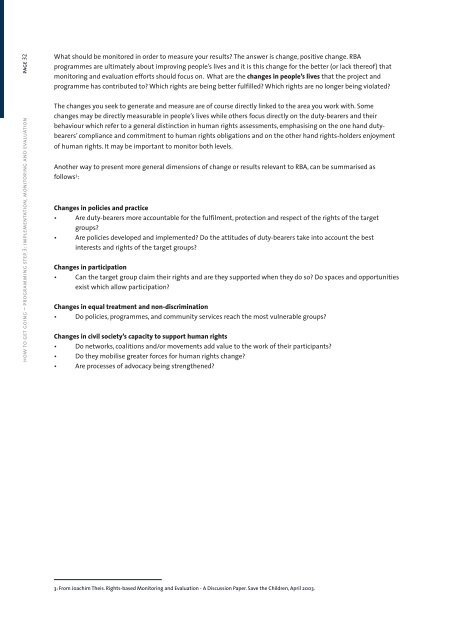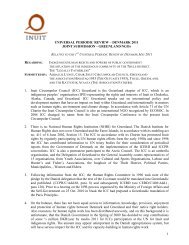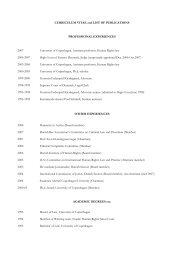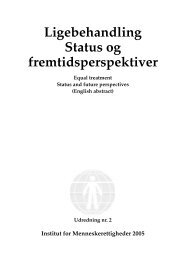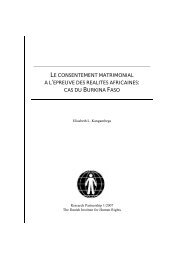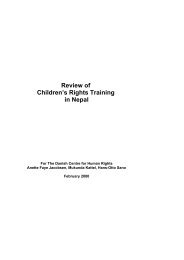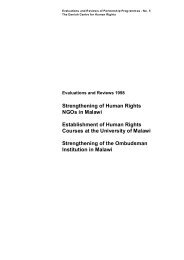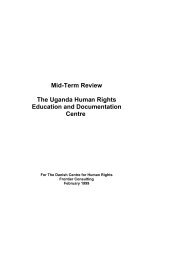applying a rights-based approach - Danish Institute for Human Rights
applying a rights-based approach - Danish Institute for Human Rights
applying a rights-based approach - Danish Institute for Human Rights
You also want an ePaper? Increase the reach of your titles
YUMPU automatically turns print PDFs into web optimized ePapers that Google loves.
how to get going – programming step 3: implementation, monitoring and evaluation page 32<br />
What should be monitored in order to measure your results? The answer is change, positive change. RBA<br />
programmes are ultimately about improving people’s lives and it is this change <strong>for</strong> the better (or lack thereof) that<br />
monitoring and evaluation ef<strong>for</strong>ts should focus on. What are the changes in people’s lives that the project and<br />
programme has contributed to? Which <strong>rights</strong> are being better fulfilled? Which <strong>rights</strong> are no longer being violated?<br />
The changes you seek to generate and measure are of course directly linked to the area you work with. Some<br />
changes may be directly measurable in people’s lives while others focus directly on the duty-bearers and their<br />
behaviour which refer to a general distinction in human <strong>rights</strong> assessments, emphasising on the one hand dutybearers’<br />
compliance and commitment to human <strong>rights</strong> obligations and on the other hand <strong>rights</strong>-holders enjoyment<br />
of human <strong>rights</strong>. It may be important to monitor both levels.<br />
Another way to present more general dimensions of change or results relevant to RBA, can be summarised as<br />
follows 3 :<br />
Changes in policies and practice<br />
• Are duty-bearers more accountable <strong>for</strong> the fulfilment, protection and respect of the <strong>rights</strong> of the target<br />
groups?<br />
• Are policies developed and implemented? Do the attitudes of duty-bearers take into account the best<br />
interests and <strong>rights</strong> of the target groups?<br />
Changes in participation<br />
• Can the target group claim their <strong>rights</strong> and are they supported when they do so? Do spaces and opportunities<br />
exist which allow participation?<br />
Changes in equal treatment and non-discrimination<br />
• Do policies, programmes, and community services reach the most vulnerable groups?<br />
Changes in civil society’s capacity to support human <strong>rights</strong><br />
• Do networks, coalitions and/or movements add value to the work of their participants?<br />
• Do they mobilise greater <strong>for</strong>ces <strong>for</strong> human <strong>rights</strong> change?<br />
• Are processes of advocacy being strengthened?<br />
3: From Joachim Theis. <strong>Rights</strong>-<strong>based</strong> Monitoring and Evaluation - A Discussion Paper. Save the Children, April 2003.


